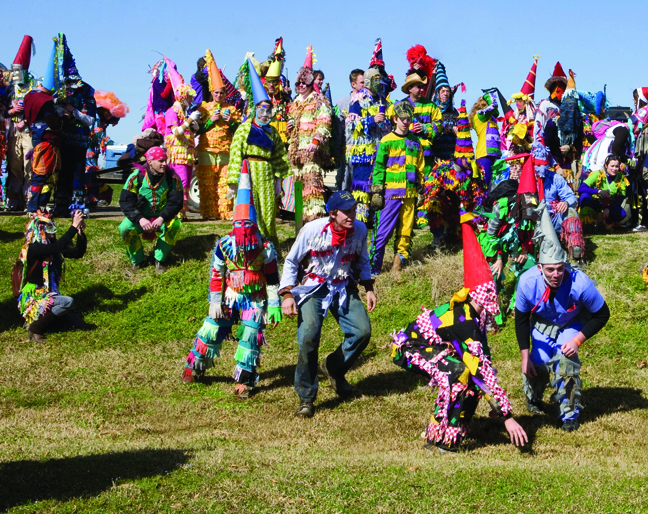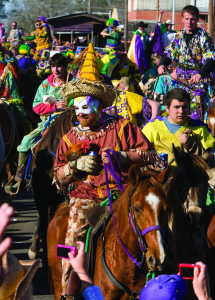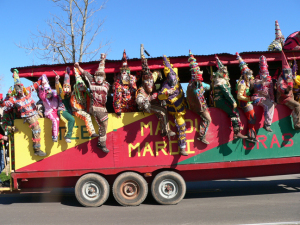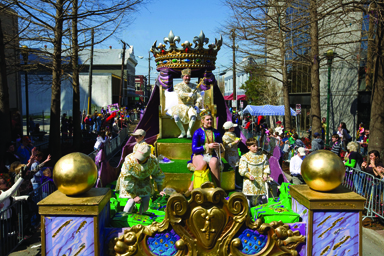By Wendy Lemlin
It’s early morning in Eunice, Louisiana, and the kaleidoscope of colors and patterns on traditional patchwork costumes are a wake-up call for the eyes, as the throng of masked revelers of the Mardi Gras “courir” set out on horseback through the countryside. Musicians on flatbed trucks provide the accompanying soundtrack with accordions and fiddles, and the beer flows freely, even at this early hour. Reliving a custom harkening back to medieval France, the “Mardis Gras”, as they are called, raucously beg ingredients from homes and farms for a communal gumbo later that day. Their loose, colorfully fringed costumes conceal their identities and, in a carryover from those long ago days, parody the roles of those in authority in the France of centuries ago.
Many hours, beers and miles later, the procession will ride into the center of town in mid-afternoon, to join a celebration where the air is filled with music, the rhythm of dancing feet, and the aromas of such Cajun delicacies as boiled crawfish, boudin, and etouffee.
Meanwhile, in the nearby town of Iota, hundreds of people bedecked in beads and feather boas, traditional costumes or western wear, are jammed onto a platform raised about 10 feet above the main street, dancing joyously to the live Cajun and zydeco music. Soon a truck load of costumed children arrive and start their ceremonial begging, a custom also from olden days, welcoming the coins that onlookers press into their little hands.
In Lafayette, the King’s Parade, with its floats and grandeur, is festively making its way through downtown to the carnival at Cajun Field, as thousands of spectators, already weighted down with strands of colorful beads, line the parade route and scramble for even more beads and trinkets thrown from the floats. Continue reading




